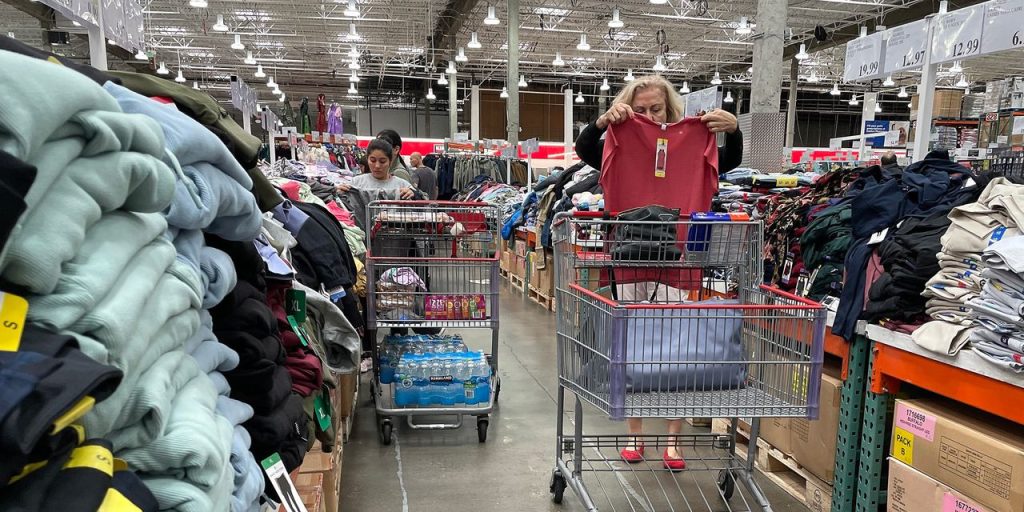Consumers continue to spend, but some economists are starting to question how long they can keep it up.
“Unsustainable” was how some economists described the latest read on personal consumption expenditures. The major reason is that the share of disposable income people were able to save declined again.
The personal savings rate, which refers to the share of disposable income that households save, dipped to 3.4% in September from 4% in August, according to the latest data from the Bureau of Economic Analysis. That’s a significant drop since the pandemic, when the savings rate soared to 32% in April 2020. Meanwhile, consumer spending rose 0.7% in September, a sharp increase that beat Wall Street expectations, showing the strength of the economy.
“The recent uptick in purchases may not be sustainable,” said Kayla Bruun, senior economist at market and industry intelligence firm Morning Consult. Households may need to either pull back on spending or rely more on debt going forward, Bruun said in a statement.
“The main reason why we think this pace of spending is not sustainable is because we look at the underlying drivers of spending. They are not the most reliable and sustainable sources of spending,” said EY’s chief economist Gregory Daco. “When you have households that are dipping into their savings, that’s not an encouraging sign,” he told MarketWatch.
Real income growth is the key to healthy consumer spending growth, Daco said, but it’s declining now. Real personal disposable income, the amount after taxes and adjusted for inflation, fell for the third consecutive month after a year of growth, according to government data.
“You don’t spend forever on your savings. You don’t spend forever on your wealth. You spend in a consistent manner on your income,” Daco continued. As a result, EY’s senior economist Lydia Boussour also called the savings dip “unsustainable,” and said the company’s research team expects “consumers’ spending enthusiasm will dim” heading into 2024.”
Some Americans were already seeing their savings dwindle this year because of higher prices and the rising costs of paying back their debts. Specifically, nearly a third of people had less money in their emergency funds compared to the start of the year, a recent survey from Bankrate found. Inflation was 3.7% in September, according to the Bureau of Labor Statistics.
During the pandemic, government stimulus payments and curbed spending allowed Americans to save more money than they typically do. From 2019 to 2022, the average American household saw their net worth surge by 37%, according to a recent survey by the Federal Reserve, bringing the average household net worth to millionaire status.
But high inflation and high interest rates continue to impact consumers in 2023. Cracks have been showing on household balance sheets in the past year, with delinquency rates ticking up for auto loans and credit cards. Experts and researchers say the excess savings families gathered during the pandemic appears to have run out among middle-income and low-income households. The holiday season is coming, which usually means heavy spending for households, and some analysts forecast the same for this year.
Plus, higher wealth doesn’t always translate to higher spending when there’s not enough cash sitting around, especially when some of that wealth is “locked in” to assets that people are unable to sell easily, such as stock market gains, Daco said.
“The question is, do people spend on that? Or is that wealth being accumulated?” he said. “Yes, you’re wealthier, but you’re not more liquid.”
Read the full article here
